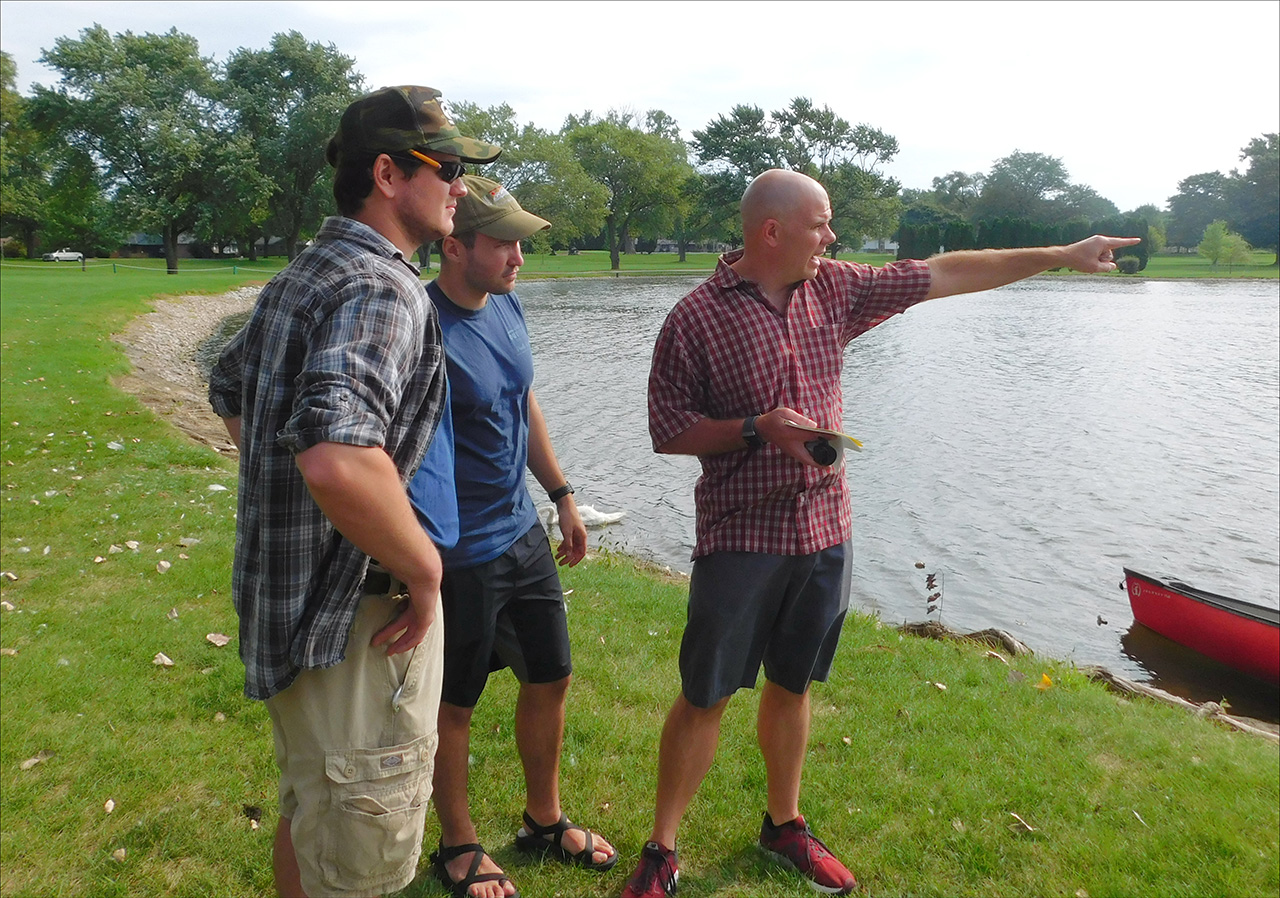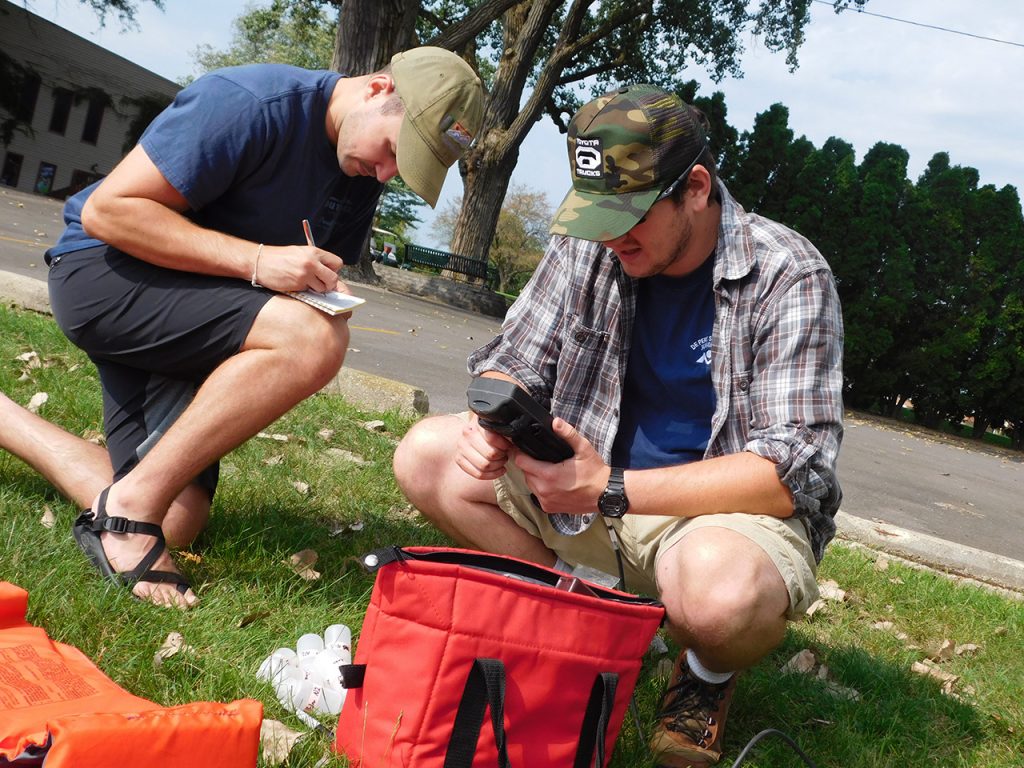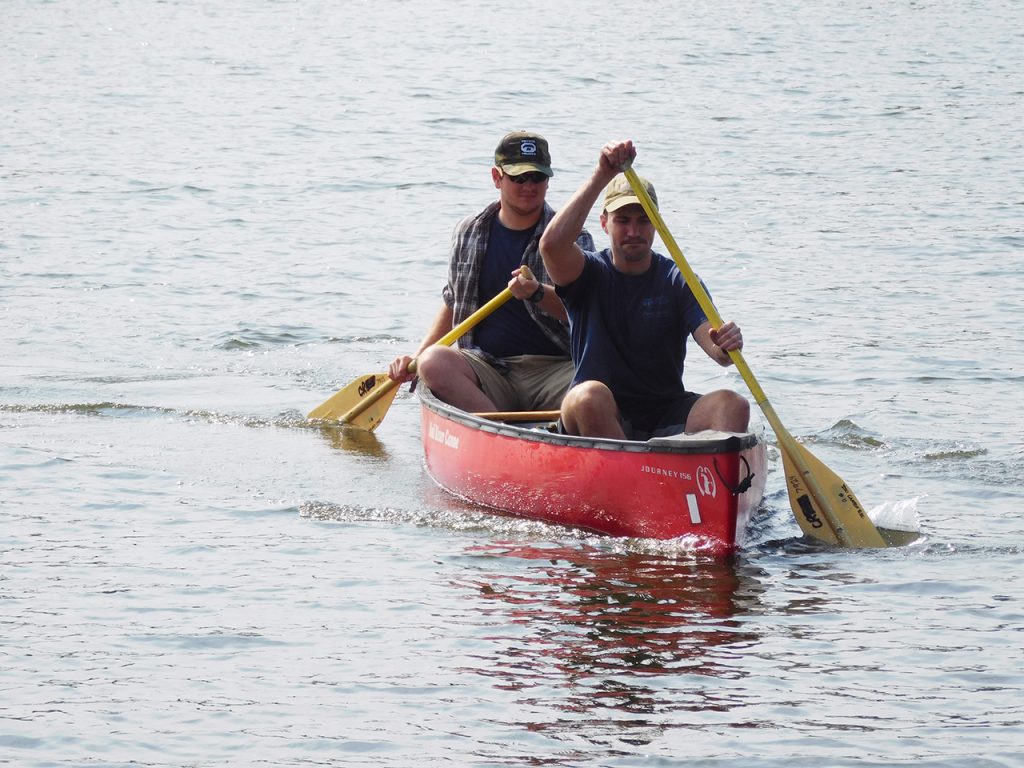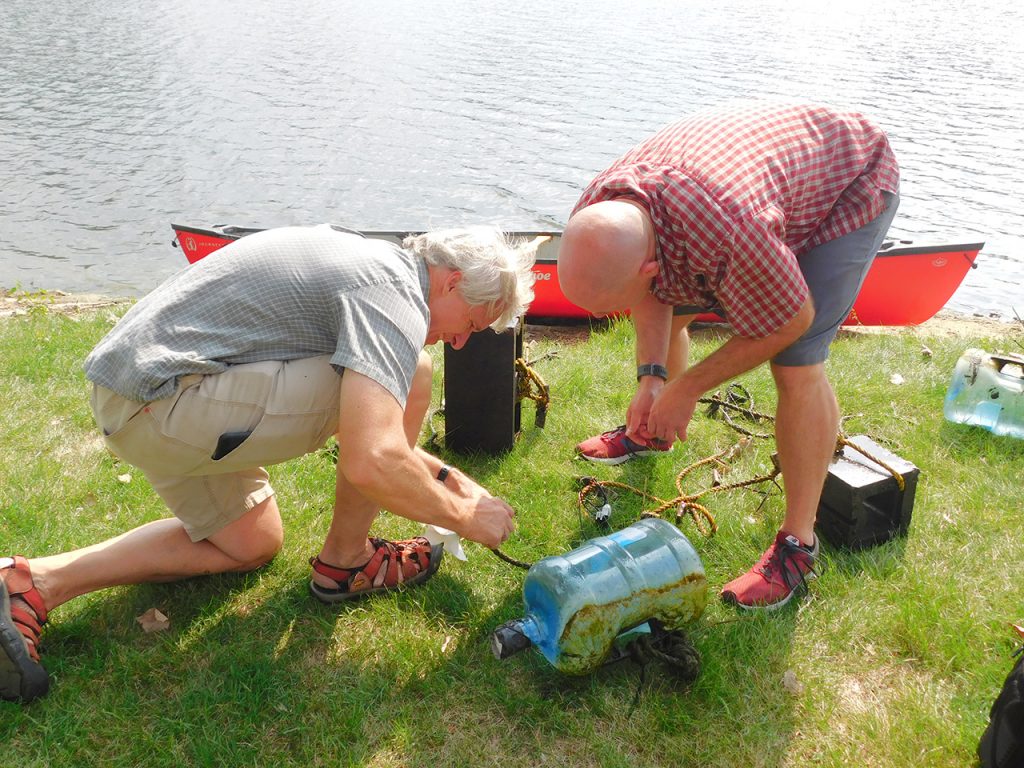To say oxygen is important to life on land is an understatement. Yet dissolved oxygen in water is vital for aquatic life as well.
A group of Illinois State University’s hydrogeology students from University Professor of Geology Eric Peterson’s class found real-world experience—and a bit of detective work—by exploring whether depleted oxygen levels impacted fish at a local lake.
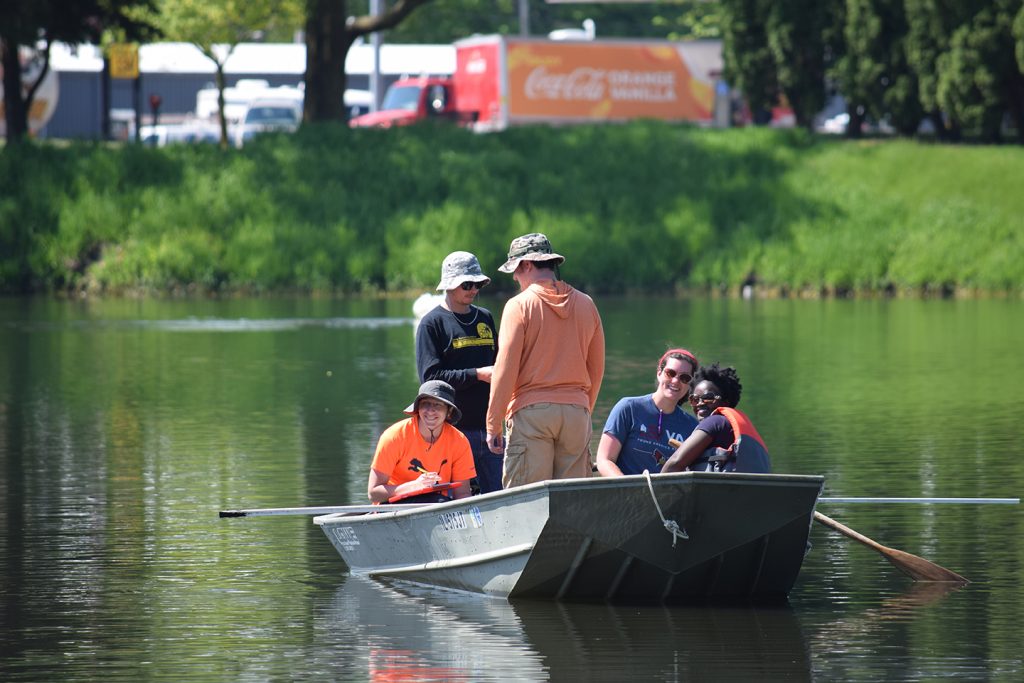
Students in Eric Peterson’s class place sensors along the lake to measure temperature and oxygen levels.
Photo by Joan Brehm
“It’s not an uncommon problem with small lakes,” said Peterson of the phenomenon known as “fish kills” where dozens of dead fish can appear overnight at the edges of a lake. “Generally, it is because the fish do not have enough oxygen.” Dissolved oxygen levels can be impacted by such factors as temperature, concentration of nitrates, algae, or how well the water is mixed, or the phenomenon where deeper, cooler water that lacks oxygen mixes with the upper in a lake that is rich in oxygen.
“We’re working on a small scale to discover the bigger picture of what is happening to the fish,” said Emmett Spooner, a graduate student in Illinois State University’s Hydrogeology Program. “It’s a small window into understanding what can keep ecosystems healthy.”
On a mild day in September, Spooner and fellow graduate student Preston Konop headed out in a red canoe, paddling their way to the location of several sensors along a small lake at an area country club. In the spring, Peterson’s class dropped weighted rope with multiple sensors at points to gather data. The once pristine rope is once again hoisted onto the shore, now encased with the smell of lake water and deep, green algae.
Even something as small as algae can impact oxygen levels for fish. “Algae perform photosynthesis in the day—taking in carbon dioxide and turning it into oxygen—but they reverse the process at night, and take up oxygen from the lake,” noted Peterson.
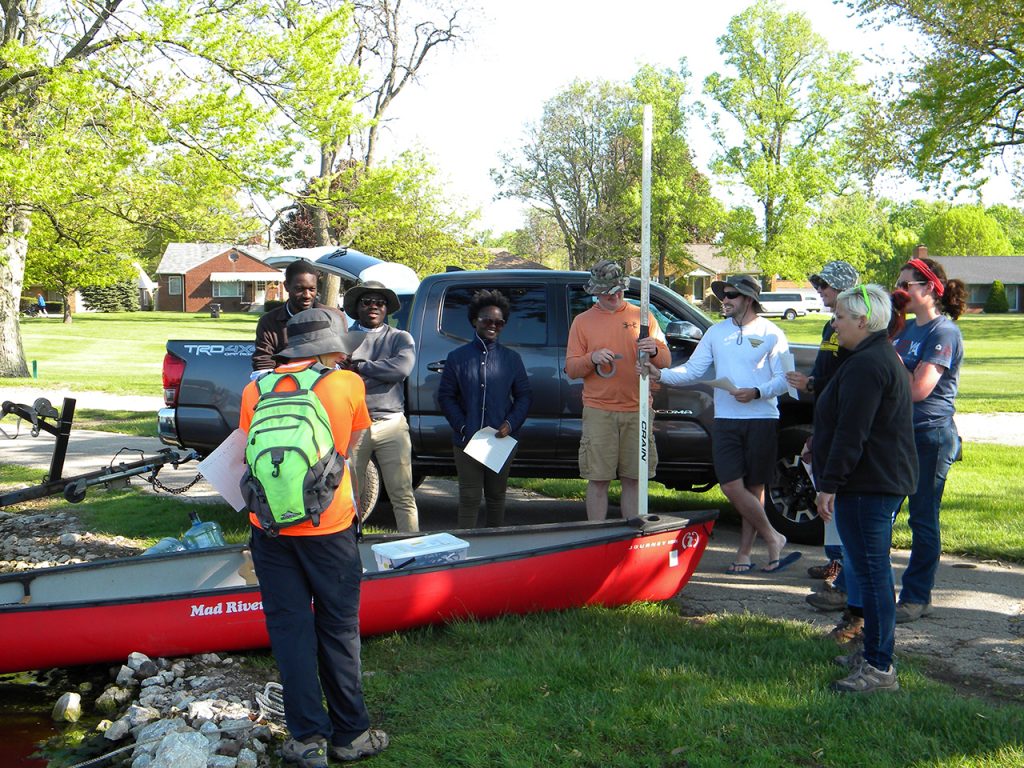
Students in Eric Peterson’s class get ready to head out onto a small lake to take samples as part of the Hydrogeology Program. Photo by Joan Brehm
The country club initially contacted Joan Brehm of the University’s Center for Sustainable Water Future to examine the water. “It seemed like a perfect fit to involve Dr. Peterson and his students,” said Brehm, who noted the goal of the center is to encourage cross-disciplinary engagement and collaboration among faculty, students, and community partners. “The students have a chance to not only learn the science of water quality, but they can also make a difference for a local community asset. This is the type of experiential learning that the Water Center is working to promote and support.”
On the lake’s shore, Spooner and Konop labeled empty bottles for water samples, as Peterson and Professor Bill Perry cleaned off the muck gathered on the cases of sensors along the ropes. Peterson, hoping the data will provide a clue, plugged each sensor into a cord connected to a laptop. “It’s doing a pretty good job,” said Peterson of the fountain that serves as one of the aerators mixing lower and upper levels of the lake. “We’ll need to do more analysis to see if it is a nutrient or mixing problem.”
Investigations into problems with bodies of water is just one aspect of the work of the hydrogeology program, which intersects research, theory, and application within courses in the Department of Geography, Geology, and the Environment.
“This is the epitome of real-world experience,” said Peterson. “All the methods we are using are applicable to jobs students would perform for consulting firms or other work.” The class also worked with the City of Bloomington on nitrate removal from the city’s source of drinking water, Lake Bloomington. Peterson noted the hands-on experience has led to nearly 100 percent of the program’s students finding placements in the field or graduate school.
“I knew the program at Illinois State was really good,” said Konop, who had the program recommended during his undergraduate studies in Wisconsin. “Water is a vital resource we can’t live without. And the need for those who understand the challenges the water supply faces is only growing.”
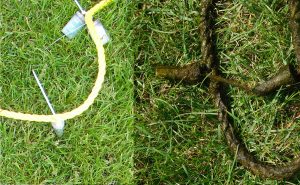
(Left) A rope with sensors to measure temperature and oxygen levels of water. (Right) The same rope after spending the summer submerged.
Back in Peterson’s lab at Illinois State, the data revealed the possible problem. “By September, dissolved oxygen content dipped below sub-optimal levels for aquatic life,” noted Peterson. “This is likely the cause.”
The country club will continue studies on the lake to determine what might have caused the drop in oxygen. For Peterson and his students, the investigative work provided not only beginning answers, but a learning experience. Several of the team presented their findings at the national Geological Society of America conference early this fall.
“This is a chance for students to be scholars and practitioners,” said Peterson.
